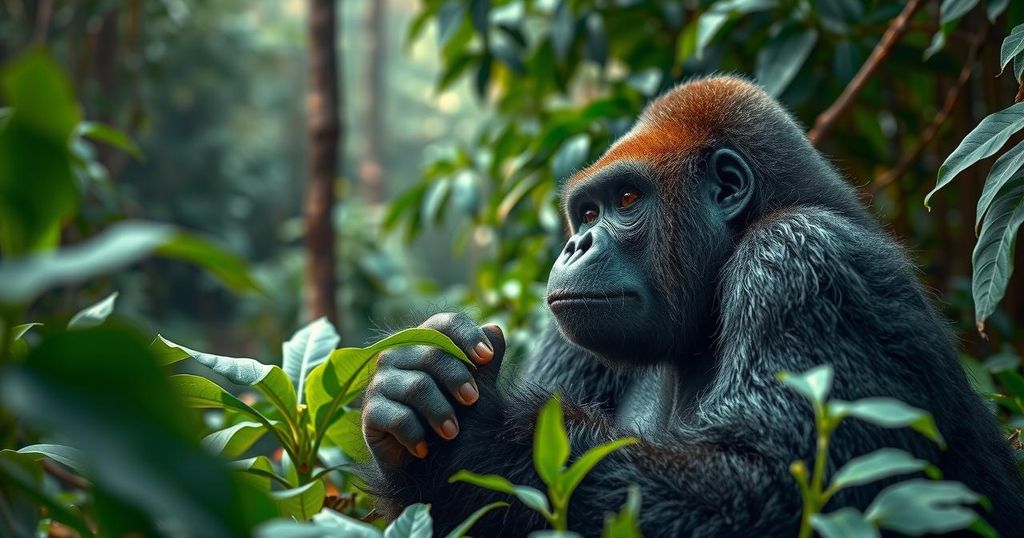The mountain gorilla population is increasing by 3% annually since 2010 in the Virunga region of the DRC, Uganda, and Rwanda, as highlighted in the WWF’s 2024 Living Planet Report. Despite this positive trend, the report reveals a catastrophic 73% decline in average monitored wildlife populations globally, emphasizing urgent conservation needs and the interconnectedness of ecosystem health and human survival.
The mountain gorilla population in the Virunga region, encompassing areas in the Democratic Republic of the Congo, Uganda, and Rwanda, has demonstrated a commendable annual increase of 3% since 2010. Notably, Uganda’s Bwindi Impenetrable Forest National Park, along with the adjacent Sarambwe Reserve in the DR Congo, is home to approximately 459 individuals of this forsaken species. The 2024 Living Planet Report, presented recently in Kampala, highlights this upward trend in mountain gorilla population, which has been consistently observed from 2010 to 2016. The World Wildlife Fund (WWF), a leading independent conservation organization with a global presence in over 100 countries and an extensive follower base exceeding 38 million, is the author of this report. However, despite this positive development concerning mountain gorillas, the report paints a stark picture of the global wildlife situation, revealing a catastrophic average decline of 73% in monitored wildlife populations over the past fifty years. This alarming statistic raises critical concerns for the state of the natural world, intensifying awareness regarding ongoing crises of climate change and biodiversity loss. As WWF International Director General, Kirsten Schuijt, emphasizes in her foreword, this decline serves as a warning sign of potential disruptions in ecosystem function, which directly impact human well-being and essential resources such as food, water, and clean air. The report encourages proactive conservation strategies including effective management of protected areas and community engagement around parks, aimed at sustaining the mountain gorilla resurgence observed in the Virunga Massif. Nonetheless, the report also emphasizes the urgent necessity for broader conservation efforts aimed at protecting not only mountain gorillas but also other great apes facing severe threats. While the marine index has shown the least decline over the observed period, specific species like sharks and rays remain critically endangered. In contrast, freshwater species face the most significant pressures, resulting in an alarming 85% decline primarily due to habitat degradation from human activities including agricultural expansion, logging, and urban development. The report concludes by stressing the critical importance of the upcoming five years, stating, “It is no exaggeration to say that what happens in the next five years will determine the future of life on Earth. We have five years to place the world on a sustainable trajectory before negative feedbacks of combined nature degradation and climate change place us on the downhill slope of runaway tipping points. All of us—governments, companies, organizations, individuals—need to walk the walk and be ready to hold to account those who fail to do so.” – 2024 Living Planet Report.
The background of this article is centered on the mountain gorilla population and broader wildlife conservation efforts articulated in the 2024 Living Planet Report released by the World Wildlife Fund (WWF). Mountain gorillas, endemic to the Virunga volcanic region, have been the subject of intensive conservation efforts aimed at reversing their population decline due to habitat loss, poaching, and human-wildlife conflict. In contrast, the report also highlights concerning global trends in wildlife populations, underscoring systemic threats across terrestrial, freshwater, and marine ecosystems and the broader implications of biodiversity loss on ecological stability and human health.
In summary, while the mountain gorilla population in the Virunga region displays encouraging growth trends, the overall landscape of wildlife conservation remains troubling. The recent Living Planet Report serves as both a reminder of the successes achievable through dedicated conservation efforts as well as a clarion call to address the alarming declines in wildlife and to safeguard ecosystems crucial for both nature and humanity’s future. With a critical five-year window ahead, it becomes imperative for all stakeholders to take decisive action and implement sustainable practices.
Original Source: chimpreports.com






